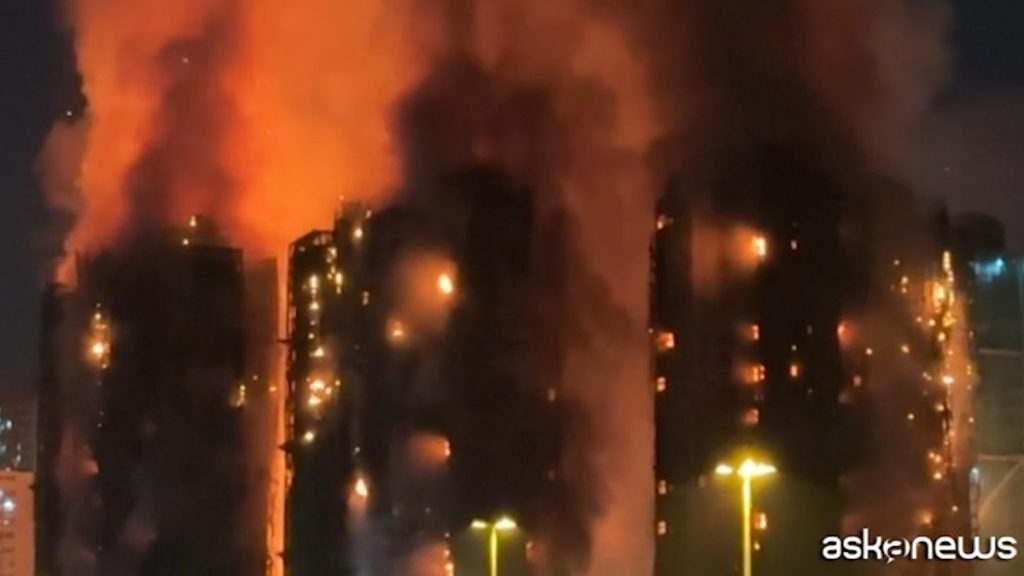Hong Kong inferno: three high‑rise towers gutted as rescuers fight through smoke and flames
A devastating blaze ripped through a cluster of residential towers in Tai Po, northern Hong Kong, leaving a scene of smoke, chaos and heartbreak. Firefighters battled towering flames that engulfed at least three blocks in the Wang Fuk Court estate, a densely populated complex home to hundreds of people. Authorities report a heavy toll: at least thirteen people have died and dozens have been rescued or treated for injuries. The scale of the response — more than 700 firefighters mobilised — underlines the emergency’s severity and the challenges faced on the ground.
What happened and where
The inferno started in the late afternoon and quickly escalated. Dense black smoke poured from multiple floors and the fire spread rapidly through facades and shared spaces. Reports from emergency services indicate that several residents were trapped in apartments and common areas and had to be rescued by crews using ladders and intensive search procedures. The classification of the incident as a level‑five fire — the highest alert in Hong Kong’s system — reflects both its intensity and the complexity of rescue operations in high‑density residential buildings.
Human cost and casualties
Officials confirmed at least thirteen fatalities among residents and rescue teams. Chou Wing‑yin of the Hong Kong Fire Services said that 28 people had been rescued, nine were declared dead at the scene, six were transported to hospital in critical condition, and four of those subsequently died in hospital. Distressingly, the list of victims also includes a 37‑year‑old firefighter who lost his life while fighting the flames. That loss has struck a chord across the city and underlines the risk faced by first responders in these operations.
Rescue operation: scale and hurdles
More than 700 fire personnel were deployed to tackle the blaze, supported by ambulance teams and police units who sealed the area to allow emergency access. The city closed nearby highway sections to facilitate emergency vehicles and control traffic flow. Rescuers described extremely difficult conditions: heavy smoke limiting visibility, intense heat, and the risk of structural collapse in some sections. Fire crews worked through the night in shifts to extinguish hotspots and search every unit, while medical teams triaged and treated the injured on site.
Why the fire spread so fast
Early witness accounts and emergency briefings suggest several factors that may have contributed to rapid fire spread: the age and density of the buildings, combustible materials in common areas or external cladding, and potential failures in compartmentalisation or fire doors. In high‑rise complexes where flats open onto internal corridors, a single ignition can escalate if smoke control systems and escape routes are compromised. Authorities have launched investigations to determine the precise origin and mechanics of the fire and whether any regulatory or maintenance lapses contributed.
Eyewitness reports and community impact
Residents reported scenes of panic as smoke filled corridors and stairwells. Some described helping neighbours to safety, while others said they were forced to seek refuge on balconies. Local authorities opened temporary shelters and arranged emergency accommodation for displaced families. Community groups and charities are already mobilising to provide immediate support — food, clothing and psychological assistance — to those affected.
Official response and investigations
Local officials have promised a thorough inquiry into the cause of the fire and the response timeline. Investigation teams will look at potential causes including electrical faults, gas leaks, or accidental ignition, as well as building safety compliance. Given the tragic loss of life — including the firefighter — authorities are expected to review rescue procedures, equipment adequacy and building safety audits to prevent future tragedies.
Longer‑term challenges: housing safety and preparedness
This disaster raises deeper questions about urban housing resilience: the adequacy of fire safety retrofits in older estates, enforcement of building codes, and the resilience of emergency services to respond to large‑scale high‑rise incidents. Policymakers may face renewed pressure to accelerate building inspections, upgrade cladding and fire detection systems, and invest in fire service capabilities — especially in densely populated districts.
